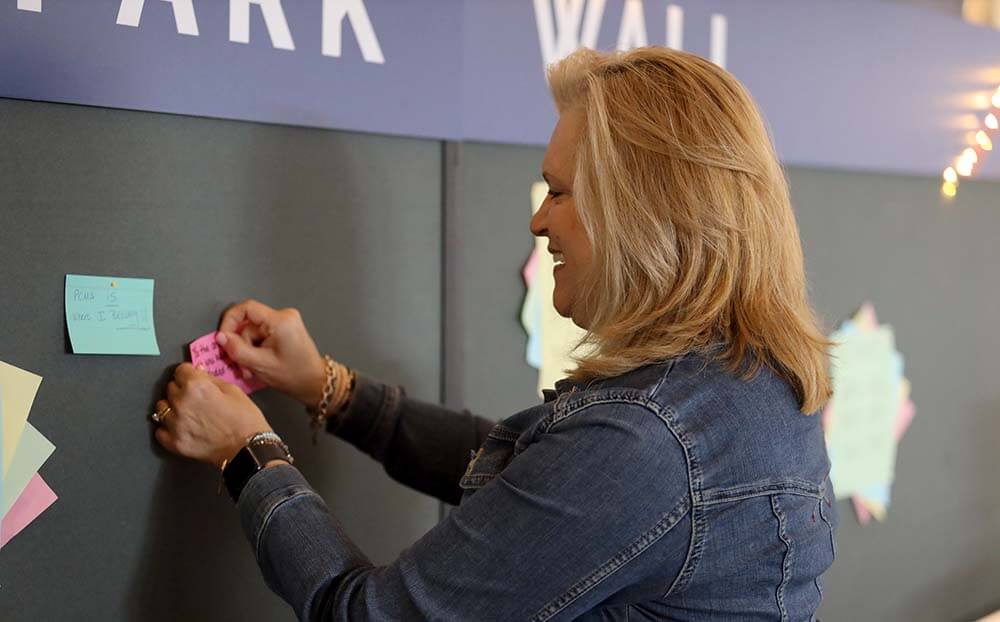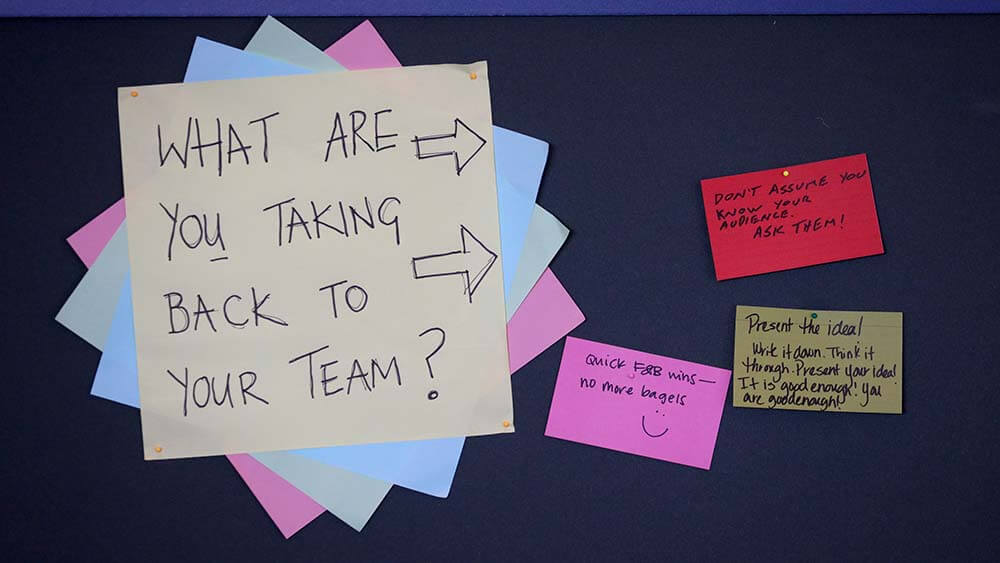
An EduCon attendee adds a Post-it Note with her event takeaway to the Spark Wall, one of Storycraft Lab’s interactive initiatives at the event. (Jacob Slaton Photography)
It might look like just a wall of colorful sticky notes, but researchers have coined a term for collaboration by Post-It: “shared artifacts.” And for two UC Irvine professors in informatics who studied how groups best work and think together, Gary and Judith Olson, creating shared artifacts such as sticky notes posted on a wall are foundational to ideal group collaboration.
Some of the advantages are obvious. Writing down our thoughts and making them visible to others allows for a diversity of viewpoints and knowledge, that “ultimately encompass[es] far more expertise than could ever be held in a single mind,” writes Annie Murphy Paul, in The Extended Mind: The Power of Thinking Outside the Brain.

Naomi Clare
But they also help us refine our own thinking, said Naomi Clare, the founder and CEO of Storycraft Lab and an expert in the intersection of spatial design and ideas. “Sticky notes force us to communicate our thoughts in succinct statements,” Clare said. “In this way, they force us to ‘get out of our own heads’ — where we are likely constructing a more complex narrative — and break our logic down into small bite-sized thoughts.” When we ask people to complete an activity, “a blank sheet of paper can be quite intimidating,” she added. “But if we break the activity down into sticky-note-sized steps, it helps to meet people where they are, and gives them options for how and where they want to jump into the task of ideation.”
Outside The Hub activation area at the Hyatt Regency in New Orleans, EduCon participants were invited to share their takeaways via Post-it Notes on the Spark Wall, one of Storycraft Lab’s interactive initiatives at the event. Attendees were asked to share one thing they had learned at the event and what they would be taking back to their teams. One participant, who had clearly attended the EduCon session on data, wrote, “Don’t assume you know your audience. Ask them!”
“In addition to helping us individually step back and analyze our own rationales, sticky notes lend themselves to the shared experience and the act of divergent thinking,” Clare said. The fact that they are modular increases accessibility, she added. “There’s an opportunity for others to add their own ideas in the spaces between the sticky notes, and that helps us to move from a place of broadcast to dialogue and interactive ideation.”
In other words, props like sticky notes not only help us improve our own thinking, they help unlock insights from the group and better retain ideas. When we create such artifacts in the presence of others, particularly as part of a closely knit group, we cognitively process ideas at a deeper level than if we encountered the information on our own, Paul writes. Psychologists call it “shared attention” — we allocate more mental bandwidth and attach more significance to material that we focus on alongside others. “We learn things better when we attend to them with other people. We remember things better when we attend to them with other people. And we’re more likely to act upon information that has been attended to along with other people.”
Barbara Palmer is deputy editor of Convene.

Outside The Hub activation area at the Hyatt Regency in New Orleans, EduCon participants were invited to share their takeaways via Post-it Notes on the Spark Wall. (Jacob Slaton Photography)
Visit the Archive
Read past installments of Meetings and Your Brain.
